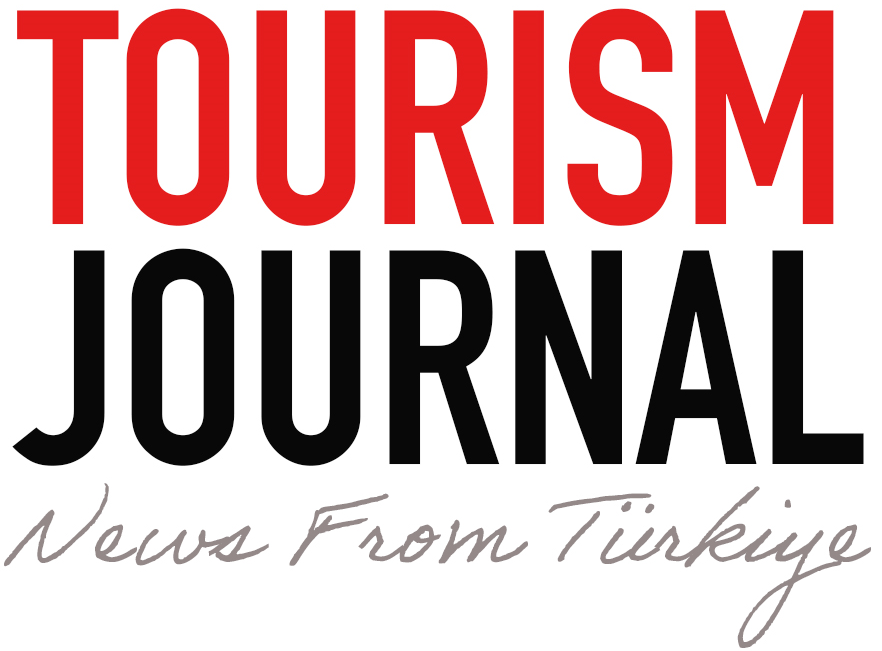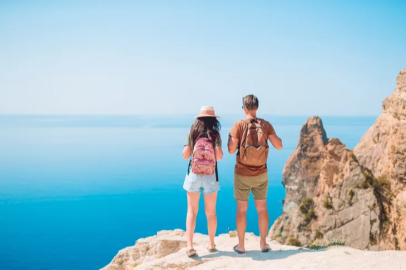Great interest in Topkapi Palace after the restorations
Fatih Mansion, Seferli Koğuşu and Hazine Koğuşu, which have been closed since 2014 in Topkapi Palace, were reopened to visitors, the Sacred Relics Department was renewed and the number of works exhibited in the apartment was increased to 5 times, and Mecidiye Mansion met with visitors for the first time in its history after 165 years.
After the restorations, great interest was shown in Topkapı Palace during the Ramadan
Making a statement to the Anadolu Agency (AA) reporter regarding the restoration works completed in the Enderun Courtyard of the palace, President of National Palaces Dr Yasin Yıldız said that the restoration processes of Fatih Mansion, Seferli Koğuşu, Hazine Koğuşu and Sacred Relics Department have been going on for many years, and since 2019, these works have been undertaken by the Presidency of National Palaces.
The number of exhibited works increased to 3,500
Yıldız stated that important works were carried out on static problems, especially earthquakes, within the scope of the restoration, and said, "The concrete load of 1500 tons in the domes of Fatih Mansion was taken and the roof was returned to its original form. Significant strengthening works were also carried out on the foundations of the building, as well as on the ground level. As you can see from the walls of the building, we have strengthened the structure with steel in some parts."
Emphasizing that there are currently no static problems in Fatih Mansion, Seferli Koğuşu, Hazine Koğuşu and Sacred Relics Department, Yıldız continued as follows:
“This is an extremely pleasing situation for us. However, these places also have a museum function. We have brought together about 2 thousand pieces of historical artifacts with the visitors in the works we have done in order to operate as a museum. This is a valuable data. Because before that, the total number of movable historical artifacts that could be visited in Topkapı Palace was 1200. At the moment, we have reached the number of 3 thousand 500.
All of the registered works in the collection of the Department of Sacred Relics can be seen
Yasin Yıldız pointed out that the Mecidiye Mansion, the only 19th century building in the palace, also met with visitors for the first time in 165 years and said;
"It is important that the letters of our Lord, which we call Name-i Saadet, and the Hırka-i Saadet, which could not be visited before, are there in the Sacred Relics Department. In addition, many works such as the Qur'an, which was dedicated to Hz. Osman, and the sheriff with the beard, were opened to visitors. We can now happily state that all of the works registered in the collection of the Department of Sacred Relics can be seen. We also furnished 1100 pieces of movable historical artifacts in the Treasury Office and brought them together with the visitors. Among them, of course, we have brought together a wide selection of the personal works of the sultans and the works registered in the Ottoman treasury, as well as the works that are well known to the visitors, such as the cülus throne, the Topkapı dagger, and the Spoonmaker's Diamond.
Pointing out that the visitors showed great interest in the palace during the Ramadan Feast after the opening of the new sections of the palace, which was held with the participation of President Erdoğan on the eve of the Ramadan, Yıldız said, "About 60 thousand people visited this place in 3 days starting from the first day of the feast. This is normally the number of visitors for the period of July-August. But we have achieved this figure as of the end of April, with these venues being on the agenda."
An additional 2 thousand 150 square meters has been added to the areas that can be visited in Topkapı Palace
Collaborative work was carried out with international museum curators in the buildings in the palace, whose restoration was completed, concepts that combine tradition and the future were created, and exhibition layouts were established in accordance with this theme.
Fatih Mansion, Seferli Koğuşu and Hazine Koğuşu in the Enderun Courtyard, and Mecidiye Mansion in the 4th courtyard were modernized with security, air conditioning, display systems and display equipment.
With the opening of these areas, 2 thousand 150 square meters have been added to the area. The number of works exhibited increased from 290 to 1979.
The Sacred Relics Department, where the priceless collection of Topkapi Palace is exhibited, was reorganized after 16 years. The number of works increased from 60 to 300. A policy was also signed within the scope of the regulation. Visitors will now be able to step into the Hırka-i Saadet Room (Has Room) for the first time, where the cardigan that the Prophet gifted to Ka'b Züheyr is kept.
The dome of the Has Room, the Hırka-i Saadet enclosure protected in silver mesh, and the 79 square meter carpet specially woven for the room in Hereke will also be visible. Among the artifacts exhibited for the first time in the Department of Sacred Relics are the Mushaf of Hz Osman, the piece of the Kaaba pillar, the Kaaba's key, locks and cutters, the silver-handled brush used for cleaning the holy relics, the dustpan and the notebooks containing the lists of the Holy Relics from the Ottoman period.
Fatih Mansion opened to visitors after 9 years
The Fatih Mansion, which came to the fore with the slippage on the slope of the Topkapi Palace facing Sarayburnu and the cracks detected in the structure, was reopened to visitors with a unique work that will set an example for the restoration culture.
The concrete added to the domes of the Mansion in the 1940s was removed. The sliding on the ground has been stopped. A retaining wall was built around the mansion. Instrumental observation devices that monitor possible seismic movements for 24 hours were placed in the area. After the restoration, the Fatih Mansion was transformed into a gallery where the Ottoman treasury was exhibited.
In the Fatih Mansion, which consists of four sections, 1150 works of the Ottoman treasury are on display. In the first hall, there are the items used by Fatih Sultan Mehmet, Yavuz Sultan Selim and Suleiman the Magnificent, and the Spoonmaker's Diamond, the most precious part of the treasury.
In the 2nd hall, there are artifacts such as the golden ceremonial throne, the sultan's crest, ceremonial armor and flask, and ceremonial weapons, representing state ceremonies and symbols of the reign. In the 3rd hall, insignia and gifts showing diplomatic relations such as the Nadir Shah Throne can be seen.
In the last hall, there are religious-themed works emphasizing the sultan's caliph identity. Most of these works are Medina Relics. The most attention-grabbing relics are the two solid gold candlesticks sent to the Prophet's grave. Gold candlesticks and other artifacts were preserved in warehouses with modern storage conditions during the restoration of the structure.
Seferli Koğuşu was transformed into Elbise-i Hümayun gallery
During the Ottoman period, the Seferli Ward, which belonged to the boys who were responsible for washing the sultan's clothes during war or expedition, was transformed into a gallery describing the fabric and clothing wealth of the dynasty.
275 works are on display at the Dress-i Hümayun Gallery. On the lower floor, there are the sultan's clothes from the period from Fatih Sultan Mehmet to Sultan Abdülmecid, and on the upper floor, there are clothes and accessories belonging to the princes and sultans. The ceremonial caftans and talismanic shirts, which meet the visitors for the first time, are among the most attention-grabbing works of the exhibition.
300 calligraphy works are on display in the Hazine Koğuşu
The Hazine Koğuşu, where the inner treasury and jewelery guards and craftsmen called "ehl-i hiref" were trained in the Ottoman period, was opened to visitors as the Hüsn-i Tat Gallery after 9 years.
There are 254 rare works selected from the National Palaces collection in the gallery. The Qur'an, which belongs to the 3rd century Hijri, stands out among the works exhibited for the first time in the two-storey gallery, which was arranged in accordance with modern museology criteria. Distinguished works of the famous calligraphers of the Ottoman Empire and examples of these works transferred to the digital environment also meet the visitors in the gallery.
Mecidiye Mansion was opened to visitors for the first time in its history
The Mecidiye Mansion, located in the 4th courtyard of Topkapı Palace, was opened to visitors for the first time in its history. Built by Sultan Abdülmecid in 1858 and used as a resting place by the sultans before religious and official ceremonies such as culus and destimal, the Mansion draws attention with its ornamental elements bearing the influences of 19th century European art.
The Sacred Relics Office, Fatih Mansion, Mecidiye Mansion, Seferli Koğuşu and Hazine Koğuşu, which were opened to visitors for the first time after the restoration, can be visited every day between 09.00 and 17.30. Except on Tuesday, when Topkapi Palace is closed.
Visitors will be able to take advantage of the free audio guide service at the entrance of the palace and no separate tickets will be required for the tour. All these sections can be visited with the Müzekart.









